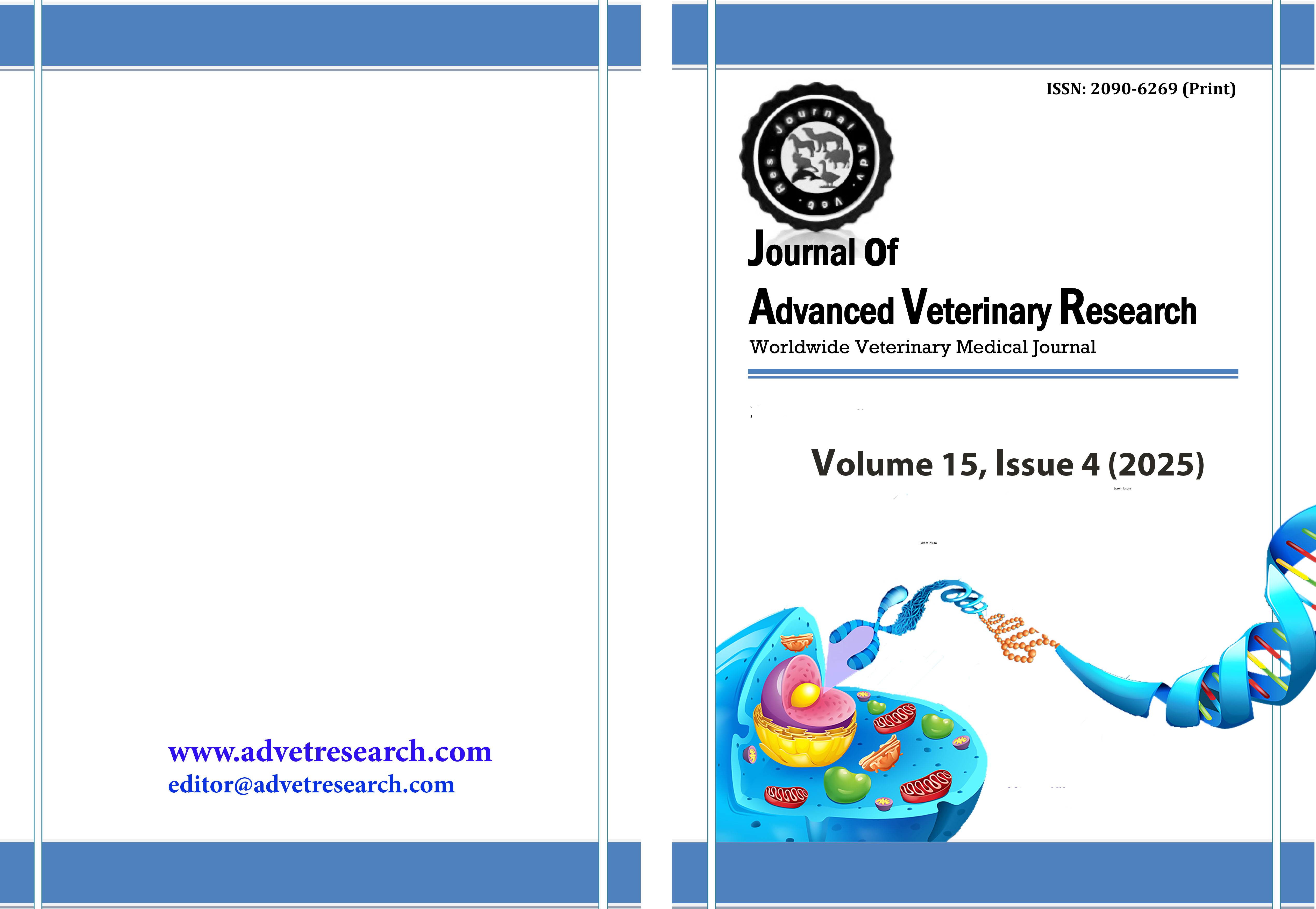Potential dietary of manganese, zinc and copper nanoparticles supplementation in improving growth performance, blood metabolites and cecal short-chain fatty acids of broilers
Keywords:
Nano- minerals, Inorganic, Blood metabolites, SCFAs, BroilersAbstract
A 35-day experiment was carried out to study the effect of replacement inorganic Mn, Zn and Cu by nanoparticles sources (either separately or in combination) in broilers diet on performance of growth, parameters of serum biochemistry and cecal short-chain fatty acids. A total number of 120 one day old, unsexed broiler chicks (Ross 308) were divided into five groups at random, with 24 chicks in each of the three replicates (8 per each). Group 1 was fed on the diet contained inorganic Mn, Zn and Cu sulfate while, group 2,3 and 4 fed diets containing Mn, Zn and Cu-sulfate nano particles, respectively). Chicks in group 5 receiving diet with a combination of nano- Mn, Zn and Cu. The results revealed that, inclusion of Mn, Zn and Cu nano particles had a positive effect on growth performance metrics, as seen by increased final weight of the body and total gaining in weight during the experimental period compared to control. The groups supplemented with nanoparticles had considerably (p<0.01) lower feed consumption than the inorganic-treated group (control). There was a significant improvement in the feed conversion ratio (FCR) and European performance efficiency factor (EPEF) of nano-trace elements supplemented group. In addition, all nano-treated groups exhibited a significant increase in serum total protein, globulin, serum minerals (Mn, Zn, Cu, Ca, and P), and cecal SCFAs as compared to the control. All groups supplemented with nano- minerals showed reduced levels of liver function test (ALT and AST), renal function test (creatinine, urea, and uric acid), lipid profile (Cholesterol, triglycerides, LDL, and VLDL). Conclusively, inclusion of nano-Mn, Zn and Cu in broiler diets (either single or in a combination) lead to appreciable enhancements in all assessed parameters experimented in this study.
Downloads
Published
How to Cite
Issue
Section
License
Copyright (c) 2025 Journal of Advanced Veterinary Research

This work is licensed under a Creative Commons Attribution-NonCommercial-NoDerivatives 4.0 International License.
Users have the right to read, download, copy, distribute, print, search, or link to the full texts of articles under the following conditions: Creative Commons Attribution-NonCommercial-NoDerivatives 4.0 International (CC BY-NC-ND 4.0).
Attribution-NonCommercial-NoDerivs
CC BY-NC-ND
This work is licensed under a Creative Commons Attribution-NonCommercial-NoDerivatives 4.0 International (CC BY-NC-ND 4.0) license




